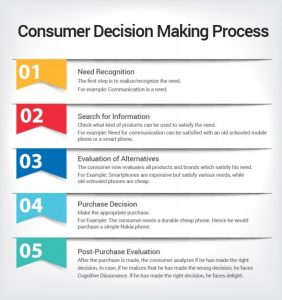As I review the actions, thoughts, and ideas from some of the most recognized social media and social selling authors, experts and consultants, I understand why business leaders and sales and marketing professionals are failing to drive demand on LinkedIn. I now understand why 8 out of 10 sales and marketing professionals are unable to clearly demonstrate a social media ROI on LinkedIn. Even the social media and social selling experts are playing a numbers game instead of focusing on building and leveraging real relationships that drive sales opportunities. Read below to see what I mean…
Jay Baer & Sandra Clark Wrongly Believe Shotguns Trump Rifles in Social Media
On his blog, in LinkedIn group discussions, on LinkedIn Pulse, and even in his presentations (including the one at Social Fresh), Jay Baer mentioned that shotguns trump rifles in social media. He mentions that a shotgun approach gets a bigger reach and has a better opportunity for going viral. He believes that social media should be a volume play, and that you should be focused on broadcasting the same content to the widest possible audience, regardless of the different needs, wants, and expectations of your followers or connections.
Jay’s approach is taking the “social” out of “social media,” and those sales and marketing executives that follow his approach are just seeing social media as another advertising medium to gain more brand awareness. When you have a high-priced solution with a complex sales process that requires strong relationships, you better be sure you’re focusing on specific audiences and that you are relevant. Rifles trump shotguns in this case!
In her article, Lessons from Pokemon Go to Use on LinkedIn, Sandra Clark, a LinkedIn expert mentions: “Sometimes my clients will say to me that some people are not useful connections on LinkedIn because they’re in the “wrong” profession, they’re too young, too old, not high enough in professional rank. I tell them don’t judge you never know who they know and if they can become a client later.” So, in reality she’s telling prospects to focus on “hopefuls” or “maybes that are more like no’s” instead of the key decisions that will most likely affect your bottom line!
Josh Turner Focuses on Leads without Lead Validation and Lead Qualification
Josh Turner, Founder of LinkedIn Selling and LinkedIn University, focuses on how many leads they are able to deliver on a weekly and monthly basis. For the President and CMO of a logistics company, Josh and his team were delivering 5 to 10 leads for sales calls per week.
However, those sales leads they were delivering sucked! 90% of the calls were with prospects who were not in the right stage of the buying process at this time, or they were with people who were not even a decision maker or influencer. The people who said “yes” to a call was just looking for free information, to network, and maybe refer the company.
There was no lead validation and qualification. What good were those leads if there were no relationships being created and leveraged to drive revenue opportunities? You see, it was a numbers game. Connect with as many people as possible and send out as many messages as possible (even those without situational and contextual content) hoping that it would stick.
Darren Kurilko Is Clearly Playing a Numbers Game
Before using our services, a client of mine was using Darren Kurilko’s LinkedIn Leads Ninja services. On my client’s behalf, Darren’s firm were making 2000+ connection requests per month. They were sending out fill-in-the-blank thank you messages at a rate of 15-25 a day. Most of the messages went ignored, because “fill-in-the-blank” templated emails do not make the customer feel as if it’s personalized. Where is the relevance in that?
Darren’s firm congratulated at least 25 of my client’s connections per day with messages like: “First Name…Congrats on XYZ! Hope you are well….Take a peek at my profile and let’s see how we can work together. Have a great day.” All this did was get my clients name in front of the connections – so it was just brand awareness, as it brought zero results. The same thing happened with endorsing 25 connections per day. You see how this became a numbers game – hoping that if the LinkedIn services company reached enough people, something would stick. There was no strategy. No use of content. Just templated messages being sent to the masses.
Jeff Molander, John Nemo, and Brynne Tillman Coach a Templated Approach That Leads Sales Professionals to Play a Numbers Game on LinkedIn
Jeff Molander, a digital sales prospecting trainer and coach, teaches clients to use templates like:
“Hi, Sam.
How are you adding new capability to your ______________ [insert area of business your product addresses] at any time soon or in future? I work with organizations like _______ [prospect’s business] to make sure ________ [goal]. Would you like to quickly explore, via email, if a larger conversation makes sense? Please let me know what you decide.”
So, instead of taking an account based marketing approach and focusing on issues that are relevant to targeted organizations at that time, sales professionals using this message are hoping that if they send it out to enough people, it will be relevant to someone and stick.
Not only is John Nemo, author of the best selling book LinkedIn Riches, coaching clients to focus on brand awareness with “personal” status updates that are not 100% business, but he’s also coaching clients to be irrelevant. For example, here’s a template he talks about in a number of his platform posts:
“Hi [NAME] – so excited to connect!
I noticed you live in [location] – [add a comment/question about the weather there, or what that location is known for, or something about current events in that place, etc.]
Also, I noticed you are in [type of job/industry they work in].
Curious what your biggest needs/challenges are right now professionally. If you have a minute, tell me more about what you’re up to so I can better understand how I can hopefully send some business your way at some point!
Very quickly about me: I help [my target audience] achieve [their goal] by providing [my product or service].
Excited to learn more about who you are, what you’re up to professionally and how I can help you out moving forward.”
When I see messages like the one I above, I think, yes you took some time to look at my profile, as you mention my location and what I do. But you are just restating the obvious. You didn’t really take the time to see how you are relevant to me. You want me to do your homework for you, so you can see how you are relevant and communicate your business value.
Now, Brynne Tillman (Chief Learning Officer at PeopleLinx, CEO of Social Selling Link, and Co-Founder of Business Development University and Social Selling GPS) tells clients:
“With each new connection, determine if they are someone you’d like to speak with and tweak the LinkedIn message slightly: NAME, it is nice to be connected on LinkedIn. Typically I like to have a brief call with my new connections so we can explore ways we might be able to work together now or in the future. Here is a link to my calendar: xxxxxxxx. Please pick a time that is most convenient for you. I am looking forward to our call.”
When I see this message, I ask, why would I want a brief call to explore ways we can work together when:
- I haven’t seen your value yet
- You haven’t shown me that you took the time to get to know me
- You haven’t demonstrated your relevance.
Why should I take time out of my day to possibly see how we can work together? Brynne’s templated messages do not answer that question. I don’t want to have a phone call just to have a phone call.
Yes, by following the approaches above, you will get some yeses and you may be lucky and get some clients. However, when you have a complex sales process (where relationships are king!), the yeses you will get following the approaches above will only get you minnow sized opportunities instead of the whales that can push the needle.
Digital & Social Articles on Business 2 Community(21)
Report Post



